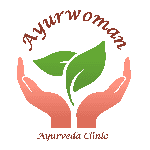Pranayama is a breathing exercise.
While pranayama can be oversimplified as a breathing exercise, it actually offers much more than that. It can also be seen as breathing training. Pranayama can be said as the exact art and science of breathing.
Once you understand the basics and learn how to do it, this can literally be done anytime and anywhere. A good everyday situation for practicing a simplified version of pranayama is by breathe training while travelling in public transport. To get maximum benefits, you should do this exercise with an empty stomach or a near empty stomach.
While breathing is an involuntary action and does not need training, you may think why do I need breathing training ? If so, read on to find out the real and perceived benefits of this widely practiced exercise.
Physics of Breathing
Breathing is an involuntary action. It happens mostly without our knowledge. Breathing is the only process in the body that goes on without our intervention. You may have observed the changes to your breathing patterns with changes to your state of mind. This can be an indication of how body and mind functions are interrelated.
Yoga, Breathing and Pranayama
Pranayama is an ancient yogic practice supposed to provide wide ranging benefits to one’s body and mind. Pranayama is considered as the most important aspect in yoga.
The practice of pranayama should ideally start with practicing yoga asanas. It may not be ideal to jump straight into pranayama.
In Yoga asanas, as you know, movement and postures in each asana are synchronized with a particular breathing pattern (inhalation or exhalation).
While it is good to move into Pranayama after having a basic training in yoga asanas, it is also possible for a beginner to start Pranayama directly without graduating through yoga asanas. But practice of pranayama after doing yoga asanas are more beneficial since practice of yoga gives you an understanding of breathing in yogic postures.
Pranayama and mind
There can be no life in the human body without breathing. Rhythm of breathing has lot of positive and negative effects on body and mind.
Practice of pranayama helps one understand the connection between the nervous system, the brain, mind and the body as a whole. The reason is that the dormant centres in the brain are activated and the mind starts functioning at a different and higher dimension. There is more clarity of thoughts and your responsiveness towards each situation happens with awareness. In order to react to situations wisely, one has to be aware of one’s own emotions and weaknesses. Pranayama helps us in improving our physical and mental awareness.
Pranayama is also called as the science of controlling the mind and body through breath. Controlling the mind means, managing the mind and thoughts in different situations.
How to do Pranayama
There are several types of Pranayama techniques. Some of the well known methods are Kapalbhathi, Kumbhaka, Nadi Shodhana and Ujjayi. Details, differences and benefits of each style may be too complex to describe in this beginner article.
To explain briefly, inhaling through one nostril (while blocking the other) and exhaling through the other nostril (while blocking the inhaled nostril) is the fundamental technique in pranayama.
Once you navigate this basic principle, you can start looking beyond the physical state of breathing. At an advanced level, the breath is held to experience the awareness and the stillness within.
Thus there are three stages of this exercise such as inhale breath, retain breath and exhale breath. So, in yogic language, they are technically called Pooraka, Kumbhaka and Rechaka respectively.
Beyond the physics of breathing
“Prana” is considered as the vital energy that flows throughout the body for sustaining life in the body. Breathing is considered as the external manifestation of prana.
If you have observed your natural breathing process, you may have noticed that both the nostrils are not active at the same time. Very rarely air passes through both nostrils equally at the same time. These passage of nostrils are connected with the left and right hemispheres of the brain. These hemispheres have the control over the functions of the body.
Rhythm of breathing has a lot of positive and negative effects on the body and mind. You will start experiencing the brain responding directly with the nerve impulses. It is our day to day experience that breathing automatically affects when various emotions are manifested through the body. Breathing can affect even the heart. To be precise, regulating the breath has a lot of positive effects on the body and the mind.
Benefits of practicing pranayama
- Effective way of managing stress
- Improves awareness so that all your actions are carried out every day consciously
- Makes you mentally healthy
- Understand your own mind and your nature
- Control the activities of the brain
- Mind is always in a calm state
- May improves your memory
- An effective and scientific technique to manage the imbalances in the nervous system
- Improves your faculty of concentration that helps in professional and personal life
- Improves the dissemination of the food essence throughout the body
Pranayama, Yoga and Ayurveda
While Ayurveda is a therapeutic science, practitioners believe in the catalytic effect of yoga on ayurvedic treatment. So, when you come in to our Ayurveda Clinic in Melbourne, as part of your treatment package, we may also suggest some yoga postures. We will do this considering your precise situations.
Feel free to get in touch with our Ayurveda practitioner via email or phone or request a call back by filling in the contact form on our website.


